Laboratory introduction
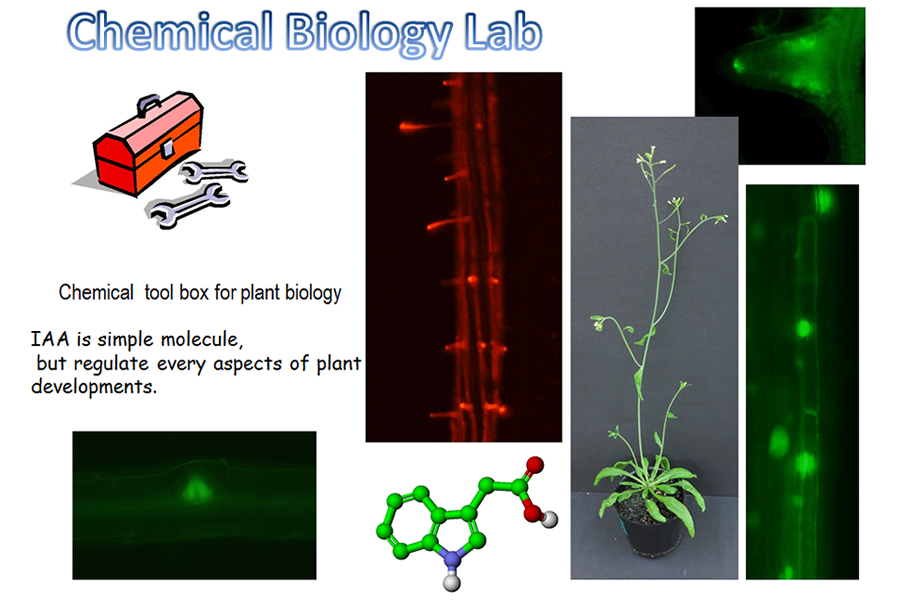
Laboratory of Biomolecular Chemistry
- Ken-ichiro Hayashi, Kosuke Fukui
Chemical Biology is one of the interfacial sciences that provide answer biological questions by directly probing living systems at the molecular level. Chemical biological studies utilize the small compounds that modulate the biological process or specifically recognize a certain biological molecule. These bioactive small compounds, bio-probes have been designed for a specific purpose or identified on the basis of biochemical or cell-based screening. Our lab has been working on the chemical biology on plant hormones and has published many high quality sciences.
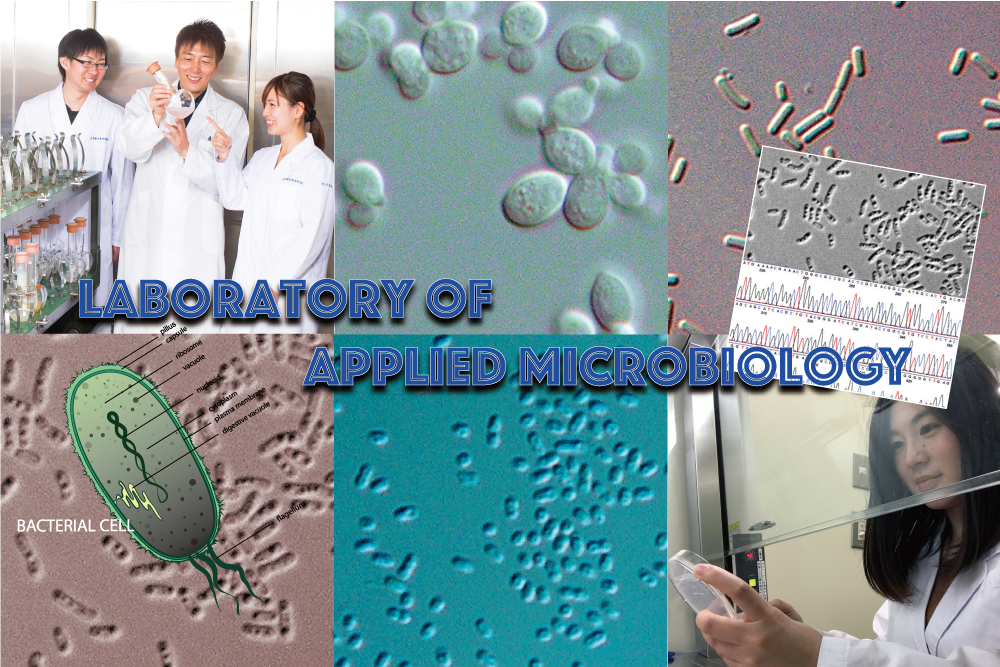
Laboratory of Applied Microbiology
- Ryoji Mitsui
Microbes make their unique communities (microbiome) to adapt in a particular environment. We are studying to understand the mechanism by which microorganisms recognize their environment and adapt it at the molecular level. Currently we are focusing on study of the symbiotic systems between plants and microbes. Various microorganisms have formed the adapted microbiome at plant rhizosphere and phyllosphere. And these microbiomes play an important role for protecting plant disease by pathogenic bacteria or for reducing oxidative stress of photosynthesis, and these abilities enable to promote a growth of plants. We believe that these studies become to be one of the solutions for the global food problems such as efficient production of agricultural crops.
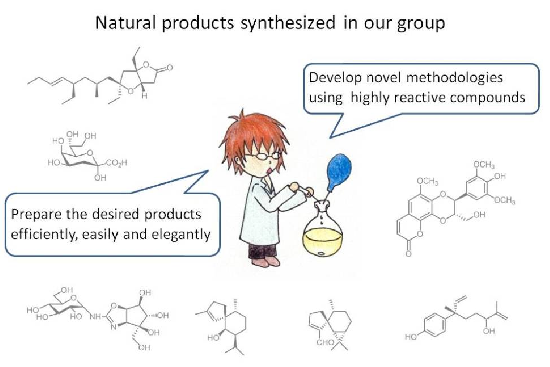
Laboratory of Natural Product Synthesis
- Susumu Ohira, Atsuhito Kuboki
-
Our group is interested in developing new synthetic methodologies to enable synthesis of biologically active natural compounds and their derivatives. We have developed such methodologies as 1,5-C,H insertion of alkylidenecarbenes to construct quaternary carbon centers, regioselective cycloaddition of stable o-quinones to prepare 1,4-benzodioxanes and β-elimination of cyclic sulfite to access carbohydrates. In addition, our interest includes setting enzymatic reaction in synthetic route of target molecules. We are also aiming to these research lead to develop new pesticides and medicines.
By collaborative research with companies, rust inhibitor and functional monomers for dental adhesive resin cements have been developed.
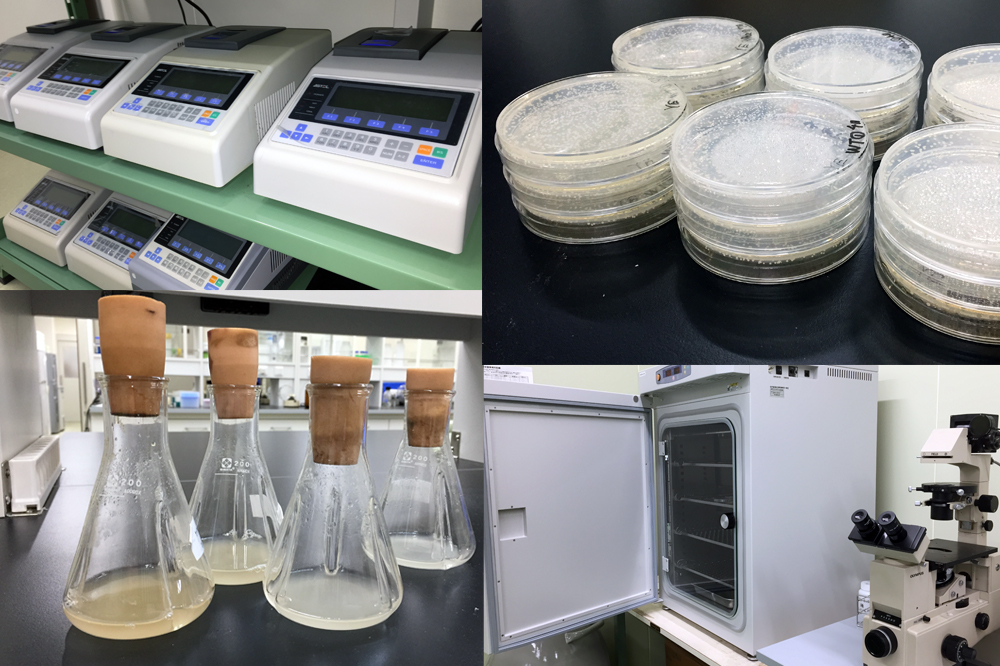
Laboratory of Molecular Genetics
- Shogo Ikeda, Shinji Kawano
-
DNA exists in the nucleus of eukaryotes. We are conducting the following research. (1) DNA lesions generated by the attacks of reactive oxygen species, carcinogens, ultraviolet, and ionized radiation are responsible for human diseases and aging. We characterize the DNA repair pathways, especially base excision repair and nucleotide excision repair, by molecular genetic approach using fission yeast as a model organism. (2) Eukaryotic DNA forms a structure called chromatin and exists in the nucleus of the cell, and it is known that the structure of chromatin changes in response to metabolic reactions such as transcription, replication and repair. We are investigating the molecular mechanism of factors involved in this chromatin structure change.
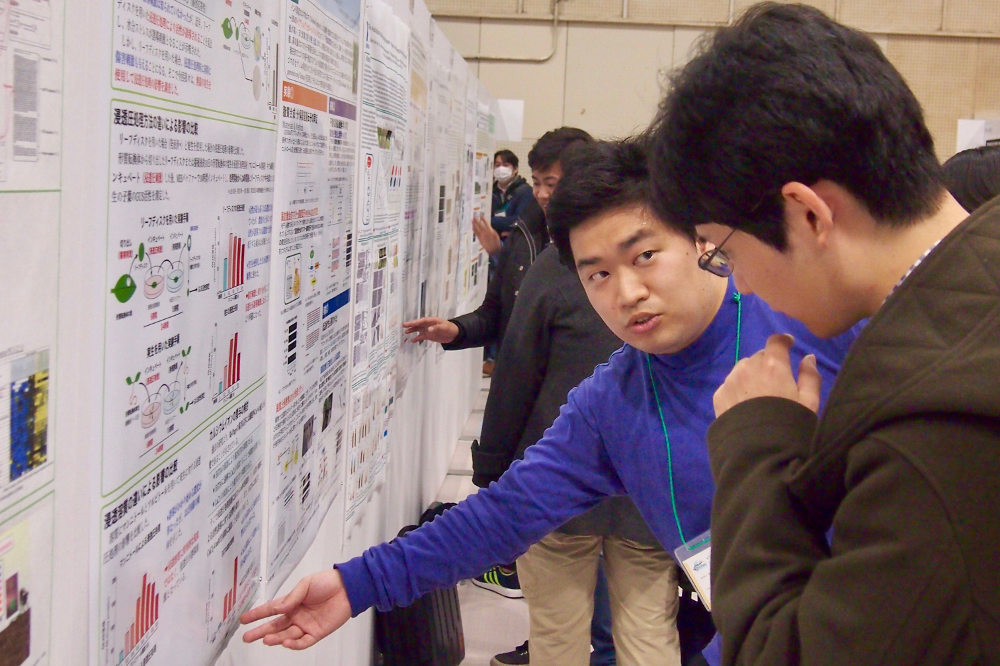
Laboratory of Bioinorganic & Plant Physiology
- Junichi Odo, Masahiko Inoguchi
-
Metal-complexes with various functions, such as enzyme-like, DNA scission, and photo-antibacterial activities, are investigated. These will lead to the development of new artificial enzyme, anticancer drug, and antibacterial agent, respectively. We also research higher plants' physiological functions, such as morphogenesis, environmental responses and production of useful compounds, utilizing plant tissue culture and genetic transformation techniques.
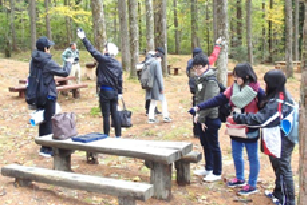
Laboratory of Environmental Biochemistry
- Da-Hong Wang, Masamitsu Miyanaga
-
Our lab focuses on examining the beneficial or harmful impacts of environmental substances on organisms (including humans) from the molecular to the population approaches.
In addition, trained students also carry out regular lake monitoring to identify lake problems.
Our research strengths include:
1) Verifying health benefits in forest environment
2) Evaluating biological accumulation and effects of POPs and heavy metals
3) Monitoring and assessing lake water quality and environmental mutagens in sea water.
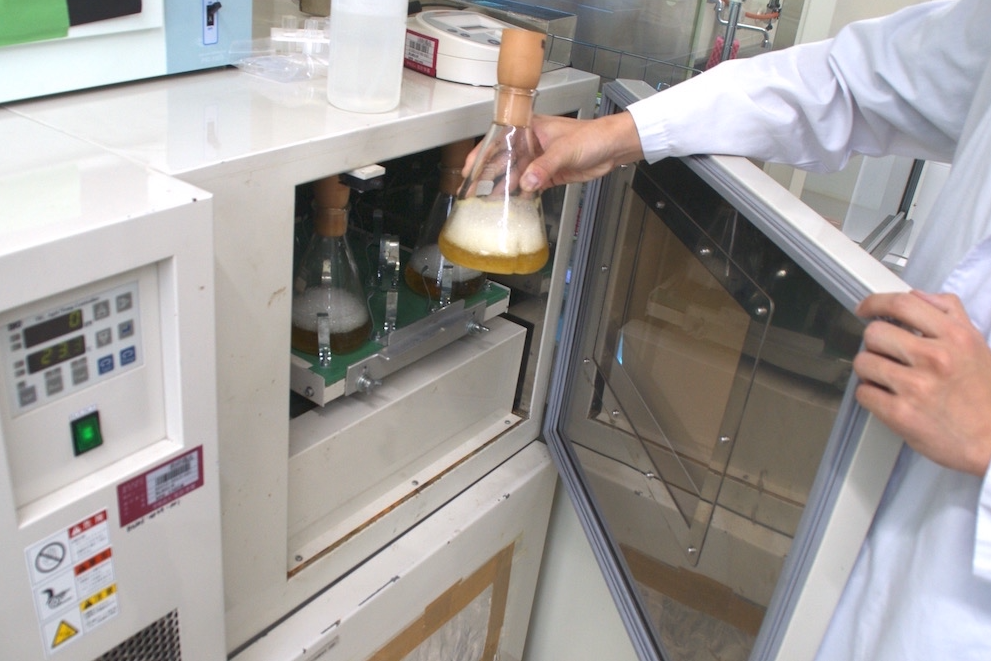
Laboratory of Cell Biochemistry
- Yoshiko Minami, Rihito Morita
-
We are interested how certain proteins carry out their roles in cells. Their biochemical properties, metabolic roles and regulatory mechanisms are being studied by biochemical and molecular biological techniques.
We mainly use two experimental materials, ”indigo plant” cultivated as the raw material of blue dye and ”true slime mold” classified as a kind of protists.
The major subjects;
Investigation of biosynthesis, storage and metabolic regulation of secondary metabolite, indican, from Polygonum tinctorium.
Investigation of molecular mechanisms of desiccation tolerance in Physarum polycephalum.
Lecture
Advanced Chemistry of Bioactive Substances
This course will examine the role of bioactive small molecules, in probing of the function and structures of bio macromolecules that are crucial to understand the system of living organism. This course introduces 1) the structure and activity of bioactive compounds, such as the hormone, signal messenger, including medicines and 2) their primary targets and mode of actions. As the goal of this course is to familiarize students with innovative recent experimental approaches and structure-based drug design in chemical biology field.
Advanced Microbial Biotechnology
Microbes have unique and special functions to adapt in various environments. In order to utilize their functions for bio-industries such as food production, medicine development and environmental problems, it is necessary to understand its function at the molecular level. Recent analytical method advances in microbiology enable us getting huge information of microbial genes or proteins in various environments. In this class, it will be introduced and familiarized with the recent experimental approaches for microbiology, and microbial biotechnologies.
Advanced Molecular Genetics
The DNA molecules which contain genetic information are constantly injured by endogenous and exogenous factors. The DNA damage causes mutation in organism, and the larger damage is lethal. In human, it causes aging and cancer. However, all organisms possess DNA repair systems, which efficiently maintain the genome integrity. In this lecture, the students understand the chemistry of DNA damage, its biological consequence, and the molecular mechanism of DNA repair pathway. They also learn about human diseases caused by DNA damage.
Advanced Molecular Biology
This lecture is designed to introduce the latest research about molecular biology. The students have to read the research papers in turn and present their reports. The purpose of lecture is to acquire the ability to think by understanding of a cutting-edge study and technique.
Advanced Environmental Biochemistry
This course will provide topics including the dynamic behavior of given anthropogenic harmful chemicals in the environment and organisms, the effects of such substances on human health and ecosystems, bioremediation related technologies. The course involves lectures, critical readings, and discussions of biochemical aspects of human diseases caused by anthropogenic chemicals in the environment.